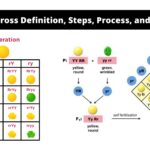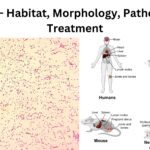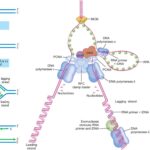IB Biology 18 Views 1 Answers
Sourav PanLv 9November 9, 2024
What roles do mitosis and cell division in the shoot apex play in plant development?
What roles do mitosis and cell division in the shoot apex play in plant development?
Please login to save the post
Please login to submit an answer.
Sourav PanLv 9May 15, 2025
Mitosis and cell division in the shoot apex play critical roles in plant development, particularly through the functioning of the shoot apical meristem (SAM). Here’s an overview of their contributions:
1. Continuous Growth and Organ Formation
- Apical Meristem Function: The shoot apex contains the shoot apical meristem, which is a region of undifferentiated cells capable of continuous division. This allows for indeterminate growth, meaning that the plant can keep growing and producing new organs throughout its life. The SAM generates various aerial organs, including leaves, flowers, and stems, essential for the plant’s overall structure and function .
- Cell Division Dynamics: Mitosis in the SAM results in the formation of new cells that can differentiate into specialized tissues. This process is crucial for producing leaf primordia and other structures that contribute to the plant’s architecture .
2. Regulation of Developmental Processes
- Floral Induction: During specific developmental stages, such as flowering, there is an increase in mitotic activity within the SAM. This heightened cell division is essential for transitioning from vegetative growth to reproductive development. For instance, studies show that mitotic rates can increase two- to three-fold during floral induction, leading to the initiation of floral meristems.
- Organogenesis: The peripheral zone of the SAM is where organogenesis occurs; this area experiences higher rates of cell division compared to the central zone, where stem cells are maintained. The balance between these zones allows for both self-renewal of stem cells and the production of new organs.
3. Response to Environmental Cues
- Environmental Influence on Growth: The shoot apex responds to environmental stimuli (e.g., light, temperature) by adjusting its rate of cell division. For example, exposure to long days can trigger increased mitotic activity in preparation for flowering . This responsiveness ensures that plants can optimize their growth and reproductive strategies based on environmental conditions.
4. Maintenance of Stem Cell Populations
- Stem Cell Maintenance: Within the SAM, a small population of cells acts as stem cells that can continuously divide and replenish the meristem. This self-renewal is vital for sustaining growth over time and ensuring that new cells are available for differentiation into various tissues.
- Feedback Mechanisms: The activity of these stem cells is regulated by complex signaling pathways involving plant hormones (like auxins) and feedback loops that maintain a balance between cell division and differentiation
0
0 likes
- Share on Facebook
- Share on Twitter
- Share on LinkedIn
0 found this helpful out of 0 votes
Helpful: 0%
Helpful: 0%
Was this page helpful?




